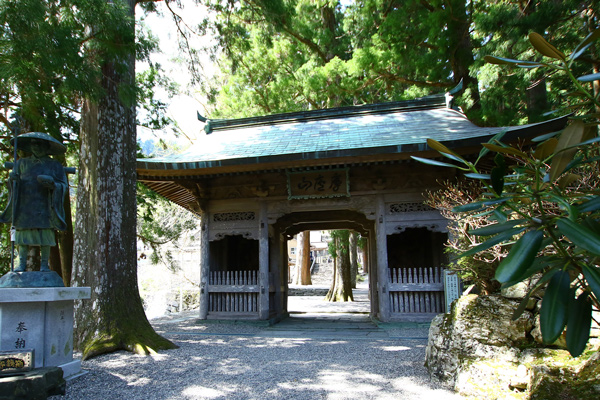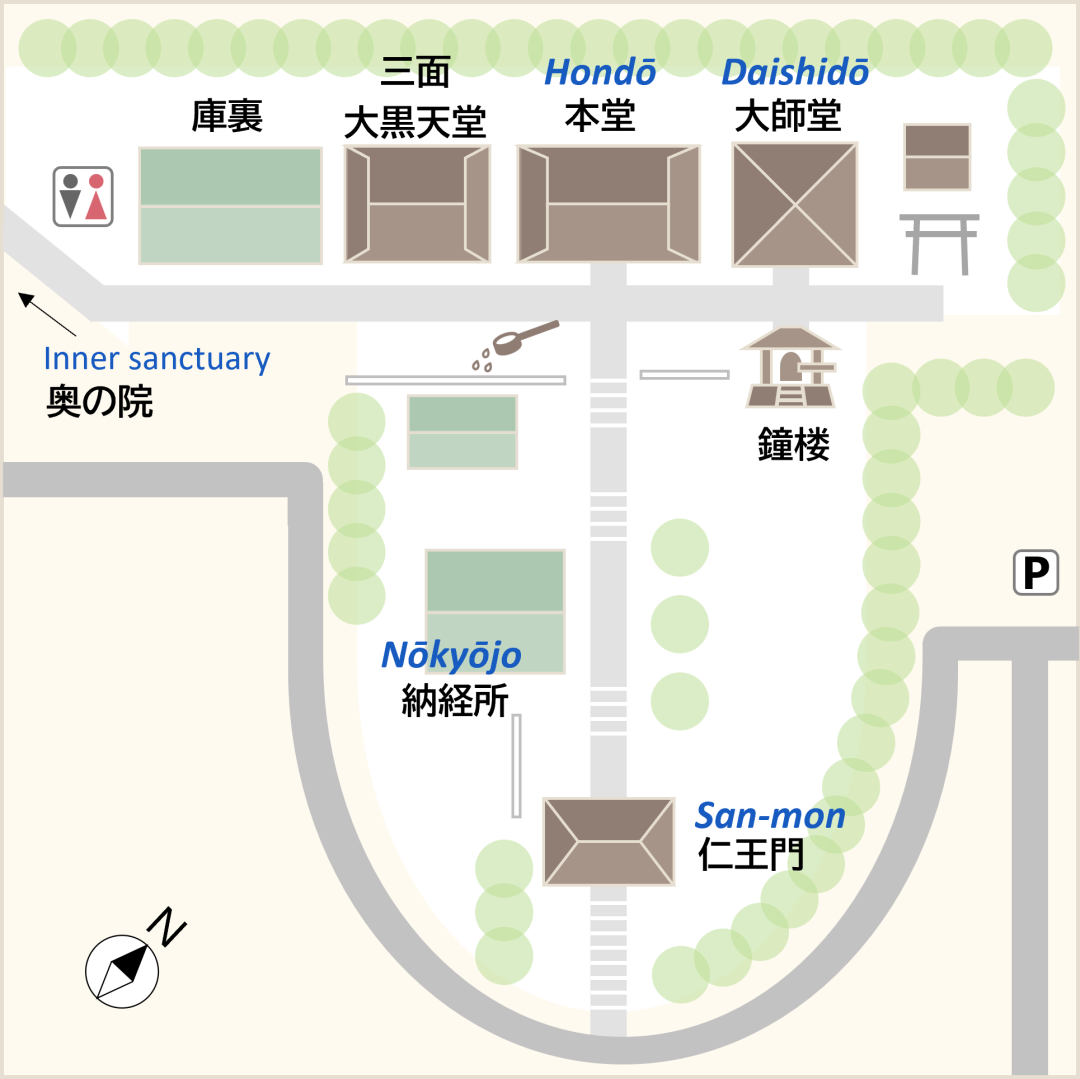The Shikoku Pilgrimage Temple Guide
Temple 12, Shōsanji

Precinct map

History of the temple
Located at an elevation of 706 meters on Mt. Shosanji (938 meters elevation), this is the second highest temple on the Shikoku Pilgrimage. There is a magnificent view of the Shikoku mountain range including Mt. Tsurugi and Mt. Shiraga. There are several temples in the Shikoku Pilgrimage that are reached by trails known as henro korogashi (pilgrims tumbling down, referring to steep sections where it is easy to slip and fall). Shosanji is one of them. It has long been a sacred place for ascetic practices that involved walking up and down steep slopes. Now there is a paved road leading up to the temple.
According to legend, the origin of the temple dates back to the Asuka Period (592-710), when En no Gyoja enshrined Zaogongen (a gongen is a Japanese deity recognized as a form of Buddha) within the mountain. There was a giant snake with supernatural powers living here. Sometimes it breathed fire and caused severe damage to life and property in the nearby villages. In 815 Kobo Daishi had a dream of Amida Nyorai (Buddha of Limitless Light and Life) when he was resting under a cedar tree. When he woke up, he found a sea of fire before his eyes. He purified himself in the Koritorigawa River and attempted to climb the mountain, but the snake turned the entire mountain into fire and blocked his way. Kobo Daishi walked on, making a mudra (esoteric Buddhist hand gesture) called Maro no In (Mudra of the Water Wheel) and chanting a mantra. The snake appeared from out of a cave close to the summit.
Kobo Daishi prayed earnestly and, with the blessings of Kokuzo Bosatsu (Bodhisattva of Wisdom and Memory), he succeeded in sealing the snake in the cave. He then enshrined a statue of three-faced Daikokuten (Buddhist god of wealth, commerce and trade) that he had carved himself, and prayed for peace and a good harvest for the snake’s victims. The mountain name of the temple (temples are metaphorically called mountains) is Marozan (Maro Mountain) and the institutional name Shosanji (Burning Mountain Temple) come from this legend. In the late Kamakura period (1185-1333), the temple became an imperial temple for Emperor Godaigo (reigned 1319-1338).
The temple grounds are lined with giant cedar trees that welcome pilgrims. They are several hundred years old, and are collectively designated a Prefectural Natural Monument.
Highlights
Three-faced Daikokuten
Three gods are combined in this one statue. At the center is Daikokuten, on the right is Bishamonten (Vaishravana), and on the left is Benzaiten (the only goddess among the Seven Gods of Good Luck). It is located in the hall to the left of the Hondo.
Jōshini-an
This hall was built on the site where Emon Saburo ended his life. He is sometimes said to have been the first pilgrim of the Shikoku pilgrimage. This hall is a bangai temple and is located 1.6 km down the road from the temple grounds. A bangai is a temple that is often visited by pilgrims as part of the Shikoku Pilgrimage although it isn’t one of the 88 numbered temples.

Annual Events
| March 21 (lunar calendar) | Shomieiku (Memorial service for Kobo Daishi) |
| August 30 | Komori Hoyo (Summer Festival) |
| Autumnal equinox day | Daihannyakai (Service of chanting sutras) |
Details
Names: Marozan, Shōjuin, Shōsanji
Denomination: Koyasan Shingon Sect
Principal Image: Kokuzo Bosatsu
Founder: En no Gyoja
Founded: 815
Access
Address: 318, Shimobun-Jichu, Kamiyama-cho, Myozai District, Tokushima 771-3421
Phone: 088-677-0112
Parking: 70-80 cars (300 yen for a standard car, 500 yen for a van, 1,000 yen for a bus)
Lodging: Closed
Official website: None
